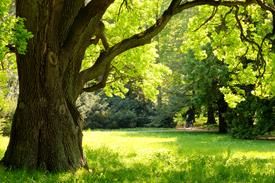Increasing Your Capacity to Experience Love
What if you could increase your capacity to experience love?
Do you ever feel that something is missing in your relationships?
Perhaps it’s the ability or “Capacity to Experience Love”?
Here is an example:
Jack had reached the top of his game. Career-wise he had most of what he had worked so hard for… his position, a good income, and a sense of satisfaction in his work. Yet, he often felt a sense of emptiness, like something was missing (like the “Capacity to Experience Love” perhaps?)
He said, “I have a wonderful partner and I know we care about each other. I just don’t feel anything. It’s like I have everything but there’s this hole.”
Jack was expressing his need to feel cared for, to actually feel loved (aka “Capacity to Experience Love”)
This yearning is a universal desire. We often long for it. We spend a lot of energy chasing it. Or we’ve given up ever having it. Even in committed long-term relationships, we often lack the sensation of loving or feeling loved.
As human beings, we long to feel safe, connected and “seen” by others.
We are programmed to connect (Learn More >). Yet, many of us reach adulthood without really knowing how to connect. We are great at reaching our goals. Yet, we don’t know how to “let someone else in” or how to experience the safety of a truly intimate relationship.
Only recently has science helped us understand this primitive instinct, this innate need to love and be loved. We now know that the structures for feeling loved are laid down before birth through infancy and involve sensory and emotional experience.
The Science and Experience of “Connection”
Your “Capacity to Experience Love”, to feel loved, grows from your earliest experiences in relationships (Read More >). If your caregivers were emotionally available to you, saw you, “got” you, then you felt safe in your world and were able to trust, relax and receive caring. With this your nervous system would also have developed the capacity, over time, to calm itself and to handle moderate amounts of stress. You could allow yourself to feel open and vulnerable with appropriate, trusted people.
Many of us did not receive this type of nurturing. For some, our parents did all the “right” things, provided for all our needs, but no one was home emotionally. For others, parents may have been really present and loving some of the time and absent, frightening, or neglectful at others. This often happens with substance abuse or mental illness that results in neglect, abuse and/ or abandonment. In these cases, depending on the severity of the circumstances, your nervous system may not be wired so that you can readily feel love. Instead, you may feel anxious, depressed or just numb (without the “Capacity to Experience Love”).
Blame vs. Interperonal Neurobiology
 We are careful not to blame our parents. They couldn’t give us what they never got. The good news is we can change that now. We can grow the needed connections in our brain ( Dr. Dan Siegal Shares More on this Here >); we can literally change our nervous system so that we can experience love – both loving and feeling loved. This is, of course, what we are all about at Ryzio!
We are careful not to blame our parents. They couldn’t give us what they never got. The good news is we can change that now. We can grow the needed connections in our brain ( Dr. Dan Siegal Shares More on this Here >); we can literally change our nervous system so that we can experience love – both loving and feeling loved. This is, of course, what we are all about at Ryzio!
When my children were quite small I remember saying to a friend, “I know I love my kids. I adore them but I don’t feel anything.” Because I never received the emotional connections as a young child, I did not have the “wiring”, so to speak, to actually experience the deep caring I knew was there. I did all the “right” things – breastfeeding, co-sleeping, staying at home – yet I wasn’t emotionally present. I wasn’t even emotionally present to myself, so how could I be available in the ways my kids needed? Over time, little by little, I worked on it.
Three steps to increase your capacity to love
I’d like to share with you a few of the simple principles I learned, which are now being supported by research. If you begin to follow these guidelines, you will experience more aliveness, more presence, and in the end, increase your capacity to love.
1. The first step is mindfulness or awareness.
 Focus your attention on what is present, first in your body, your breath, and secondly, in your surroundings. Sitting here as I write, I notice I was holding my breath a bit. When I bring my attention to my breath, I automatically breathe more deeply and relax my shoulders. I look out the window at the big oak tree. It just is. Not striving to be anywhere else, it is allowing the wind to blow through its branches. And, in this moment, I can just be, as well.
Focus your attention on what is present, first in your body, your breath, and secondly, in your surroundings. Sitting here as I write, I notice I was holding my breath a bit. When I bring my attention to my breath, I automatically breathe more deeply and relax my shoulders. I look out the window at the big oak tree. It just is. Not striving to be anywhere else, it is allowing the wind to blow through its branches. And, in this moment, I can just be, as well.
I notice as I really take in the tree, my mind wanders and I imagine you, there, and wonder if you might just be allowing a breath, too. Hearing a bird call and the cars in the distance, I come back home, to my body, my breath, this moment. This is a practice of mindfulness that will help any of us make great strides in our quest for feeling loved. Tracking your own body when you are with others helps you know when you are safe, when you can move toward, when you need to move away. Having developed this sensory knowing, we can more readily receive “the goodies” when they are there.
2. The second step is receiving.
From a place of mindful awareness, a helpful practice is one of receiving. If I can’t feel love, the chances are that I am not very good at receiving. Many of us are quite adept at giving but not so good at receiving. For me, this has been a life-long learning. It requires some awareness and some innate capacity to feel safe within relationships.
Love transcends all time. It can feed us forever. Try to recall someone who would wish you well – a grandparent, teacher, coach, neighbor, friend’s parent – anyone. Now see if you can recall a moment, a look, a gesture. Try taking a breath, closing your eyes, even placing your hand over your heart. Receive the caring now. Breathe and repeat often.
As you go about your day, notice when someone pays you a compliment or says something nice—what do you do with it? Do you take a breath, smile, have eye contact and say, “Thanks?” Or do you rebuff it, saying something like, “Oh, it was nothing?”
Practice receiving from people who are safe or in situations that feel non-threatening. For some of us, this is having eye contact and just receiving a smile from the grocery clerk, saying “Thank you,” and pausing when someone opens the door for you. When talking with a friend, try to see the preciousness in that relationship, take in, as much as you can, that they might genuinely respect you, enjoy your company, and care for you. Notice what that feels like inside.
 As you feel safer, try actually receiving from your nearest and dearest. Slow down, really receive the hug, for example. Have more eye contact. Keep breathing, keep noticing and keep practicing. As my husband and Ryzio co-leader, Ken, would say, “Notice what you notice!”
As you feel safer, try actually receiving from your nearest and dearest. Slow down, really receive the hug, for example. Have more eye contact. Keep breathing, keep noticing and keep practicing. As my husband and Ryzio co-leader, Ken, would say, “Notice what you notice!”
3. Step three is authentic affirmations.
Our authentic, personal affirmations begin to change the connections in the brain. These should include strong images and sensations of loving, of healing the Little One who may not have received adequate emotional connection early in life. We begin now.
Consciously tell yourself things like, “I’m safe. I can receive now. I deserve love.” This can go a long way toward healing your numbness and learning to feel loved. You might imagine yourself as a Loving Adult nurturing yourself at a very young age. Tell that Little One things like, “I’m here now. You are safe. You are loved.”
An increased capacity to experience love
There is always more to say about feeling loved. And, I find that as I practice these small things – mindfully tracking myself and others, consciously opening to receive and telling myself some statement of deserving – my capacity to love opens, deepens and I experience things I never knew were possible.
When our first granddaughter arrived, I remember looking into that tiny, precious face, eyes fixed on mine, my heart bursting with feelings of love and thinking, “I thought I could feel love before. I thought I knew what love was. Now, this is loving and feeling loved!”
This article was written by Marti Glenn, Ph.D., Ryzio Clinical Director
